-
 Bitcoin
Bitcoin $116500
1.98% -
 Ethereum
Ethereum $3851
6.94% -
 XRP
XRP $3.070
3.95% -
 Tether USDt
Tether USDt $1.000
0.04% -
 BNB
BNB $774.7
1.77% -
 Solana
Solana $171.9
4.66% -
 USDC
USDC $1.000
0.01% -
 Dogecoin
Dogecoin $0.2142
6.71% -
 TRON
TRON $0.3387
1.28% -
 Cardano
Cardano $0.7678
5.61% -
 Sui
Sui $3.747
9.68% -
 Hyperliquid
Hyperliquid $39.16
3.69% -
 Stellar
Stellar $0.4157
6.28% -
 Chainlink
Chainlink $17.93
9.21% -
 Bitcoin Cash
Bitcoin Cash $578.1
3.28% -
 Hedera
Hedera $0.2531
5.60% -
 Ethena USDe
Ethena USDe $1.001
-0.02% -
 Avalanche
Avalanche $22.75
3.82% -
 Litecoin
Litecoin $120.1
3.76% -
 UNUS SED LEO
UNUS SED LEO $8.953
-0.37% -
 Toncoin
Toncoin $3.323
4.76% -
 Shiba Inu
Shiba Inu $0.00001266
4.22% -
 Uniswap
Uniswap $10.13
7.08% -
 Polkadot
Polkadot $3.786
5.09% -
 Dai
Dai $1.000
-0.02% -
 Monero
Monero $273.0
-5.03% -
 Bitget Token
Bitget Token $4.391
1.62% -
 Cronos
Cronos $0.1480
5.45% -
 Pepe
Pepe $0.00001091
5.80% -
 Ethena
Ethena $0.6314
11.93%
How much is the Bitget handling fee? Detailed description of Bitget transaction fee rate
Bitget uses a maker-taker fee model for spot and futures trading, with tiered discounts based on 30-day volume and BGB holdings, and charges withdrawal fees varying by cryptocurrency.
May 28, 2025 at 04:01 am
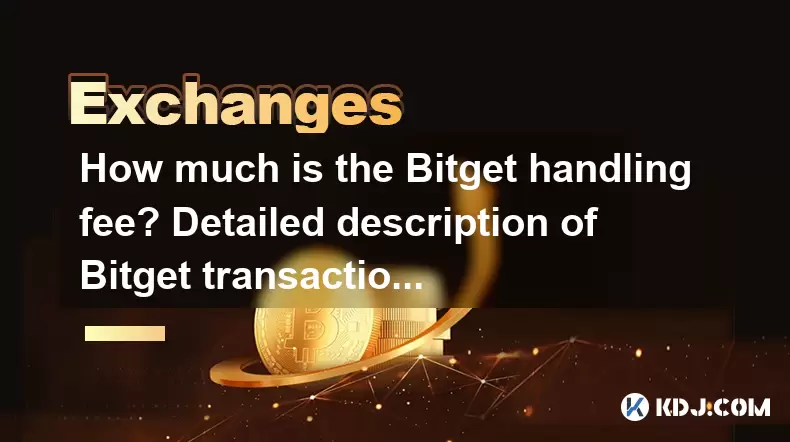
When engaging with cryptocurrency exchanges like Bitget, one of the critical factors to consider is the transaction fee structure. Bitget, a prominent platform in the crypto trading sphere, has a specific fee schedule that varies depending on the type of transaction and the user's trading volume. In this article, we will delve into the details of Bitget's handling fees, exploring the various rates and how they apply to different types of transactions.
Understanding Bitget's Fee Structure
Bitget employs a maker-taker fee model, which is common among many cryptocurrency exchanges. In this model, fees are differentiated based on whether a trader is adding liquidity to the market (maker) or removing liquidity (taker). Makers place orders that are not immediately matched and thus add depth to the order book, while takers take existing orders from the order book, thus reducing its depth.
Bitget's Spot Trading Fees
For spot trading on Bitget, the fee structure is as follows:
- Maker Fee: 0.1%
- Taker Fee: 0.1%
These are the standard rates for users who do not have any trading volume discounts. However, Bitget offers a tiered discount system based on the user's 30-day trading volume and BGB (Bitget Token) holdings. The more a user trades or holds BGB, the lower their fees can become. Here is a breakdown of the tiered discounts:
- VIP 0: 0-500 BTC in 30-day volume, 0-500 BGB holding - Maker: 0.1%, Taker: 0.1%
- VIP 1: 500-1,000 BTC in 30-day volume, 500-1,000 BGB holding - Maker: 0.095%, Taker: 0.095%
- VIP 2: 1,000-2,000 BTC in 30-day volume, 1,000-2,000 BGB holding - Maker: 0.09%, Taker: 0.09%
- VIP 3: 2,000-4,000 BTC in 30-day volume, 2,000-4,000 BGB holding - Maker: 0.085%, Taker: 0.085%
- VIP 4: 4,000-8,000 BTC in 30-day volume, 4,000-8,000 BGB holding - Maker: 0.08%, Taker: 0.08%
- VIP 5: 8,000-15,000 BTC in 30-day volume, 8,000-15,000 BGB holding - Maker: 0.07%, Taker: 0.07%
- VIP 6: 15,000-30,000 BTC in 30-day volume, 15,000-30,000 BGB holding - Maker: 0.06%, Taker: 0.06%
- VIP 7: 30,000-50,000 BTC in 30-day volume, 30,000-50,000 BGB holding - Maker: 0.05%, Taker: 0.05%
- VIP 8: 50,000+ BTC in 30-day volume, 50,000+ BGB holding - Maker: 0.04%, Taker: 0.04%
Bitget's Futures Trading Fees
For futures trading, Bitget also uses a maker-taker model, but the fees are different from spot trading. The standard rates are:
- Maker Fee: 0.02%
- Taker Fee: 0.06%
Similar to spot trading, Bitget offers a tiered discount system for futures trading based on the user's 30-day trading volume and BGB holdings. Here is the breakdown:
- VIP 0: 0-500 BTC in 30-day volume, 0-500 BGB holding - Maker: 0.02%, Taker: 0.06%
- VIP 1: 500-1,000 BTC in 30-day volume, 500-1,000 BGB holding - Maker: 0.019%, Taker: 0.057%
- VIP 2: 1,000-2,000 BTC in 30-day volume, 1,000-2,000 BGB holding - Maker: 0.018%, Taker: 0.054%
- VIP 3: 2,000-4,000 BTC in 30-day volume, 2,000-4,000 BGB holding - Maker: 0.017%, Taker: 0.051%
- VIP 4: 4,000-8,000 BTC in 30-day volume, 4,000-8,000 BGB holding - Maker: 0.016%, Taker: 0.048%
- VIP 5: 8,000-15,000 BTC in 30-day volume, 8,000-15,000 BGB holding - Maker: 0.015%, Taker: 0.045%
- VIP 6: 15,000-30,000 BTC in 30-day volume, 15,000-30,000 BGB holding - Maker: 0.014%, Taker: 0.042%
- VIP 7: 30,000-50,000 BTC in 30-day volume, 30,000-50,000 BGB holding - Maker: 0.013%, Taker: 0.039%
- VIP 8: 50,000+ BTC in 30-day volume, 50,000+ BGB holding - Maker: 0.012%, Taker: 0.036%
Bitget's Withdrawal Fees
In addition to trading fees, Bitget charges withdrawal fees for transferring cryptocurrencies out of the platform. These fees vary depending on the cryptocurrency being withdrawn. Here are some examples of withdrawal fees for popular cryptocurrencies:
- BTC: 0.0005 BTC
- ETH: 0.01 ETH
- USDT (ERC20): 25 USDT
- USDT (TRC20): 1 USDT
It's important for users to check the current withdrawal fees on Bitget's website, as these can change over time.
How to Check Your Fee Rates on Bitget
To check your current fee rates on Bitget, follow these steps:
- Log into your Bitget account
- Navigate to the 'Assets' section
- Select 'Transaction Fees'
- Review the displayed fee rates based on your current VIP level and trading volume
This section will show you both your spot and futures trading fees, as well as any applicable withdrawal fees.
Strategies to Minimize Fees on Bitget
There are several strategies that users can employ to minimize their fees on Bitget:
- Increase Trading Volume: By increasing your 30-day trading volume, you can move up the VIP levels and enjoy lower fees.
- Hold BGB: Holding more BGB can also help you achieve a higher VIP level, which results in reduced fees.
- Use Limit Orders: Placing limit orders can help you act as a maker, which typically incurs lower fees than taking liquidity as a taker.
- Choose Lower Fee Cryptocurrencies for Withdrawals: For example, withdrawing USDT via TRC20 is cheaper than via ERC20.
By understanding and utilizing these strategies, users can effectively manage and reduce the fees they pay on Bitget.
Frequently Asked Questions
Q1: Does Bitget offer any fee waivers or promotions?
A1: Bitget occasionally runs promotions or special events where they may offer reduced fees or fee waivers. It's advisable to check their official announcements or social media channels for the latest promotions.
Q2: Are there any hidden fees on Bitget?
A2: Bitget is transparent about its fee structure. All fees, including trading and withdrawal fees, are clearly stated on their platform. However, users should be aware of network fees when withdrawing cryptocurrencies, which are not controlled by Bitget but by the blockchain networks.
Q3: How often does Bitget update its fee structure?
A3: Bitget may update its fee structure periodically. Users should check the official Bitget website or their account settings to stay informed about any changes to the fee rates.
Q4: Can I negotiate fees with Bitget?
A4: Bitget's fee structure is standardized and applies to all users based on their trading volume and BGB holdings. However, users can benefit from the tiered discount system by increasing their trading volume or holding more BGB.
Disclaimer:info@kdj.com
The information provided is not trading advice. kdj.com does not assume any responsibility for any investments made based on the information provided in this article. Cryptocurrencies are highly volatile and it is highly recommended that you invest with caution after thorough research!
If you believe that the content used on this website infringes your copyright, please contact us immediately (info@kdj.com) and we will delete it promptly.
- Dogecoin, Crypto, and the 25x Gains Dream: What's Next?
- 2025-08-07 20:50:12
- Dogecoin: A Second Chance for the OG Meme Coin?
- 2025-08-07 20:50:12
- BlockchainFX: Your Choice for Long-Term Crypto Gains?
- 2025-08-07 21:10:12
- Pepe Dollar's Presale Mania: Memecoin Staking and the Crypto Revolution
- 2025-08-07 21:10:12
- Aave Users Targeted in Sophisticated Phishing Scam: A DeFi Reality Check
- 2025-08-07 21:15:56
- Ollama Turbo & GPT-OSS: Revolutionizing AI Model Accessibility and Speed
- 2025-08-07 20:29:33
Related knowledge

How to deposit USD on Bitstamp
Aug 07,2025 at 05:18pm
Understanding Bitstamp and USD DepositsBitstamp is one of the longest-standing cryptocurrency exchanges in the industry, offering users the ability to...
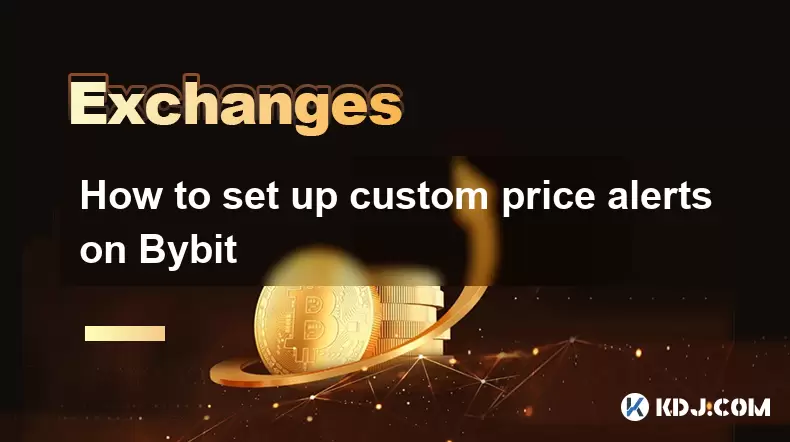
How to set up custom price alerts on Bybit
Aug 07,2025 at 04:31pm
Understanding Price Alerts on BybitPrice alerts on Bybit are essential tools for traders who want to stay informed about significant price movements i...
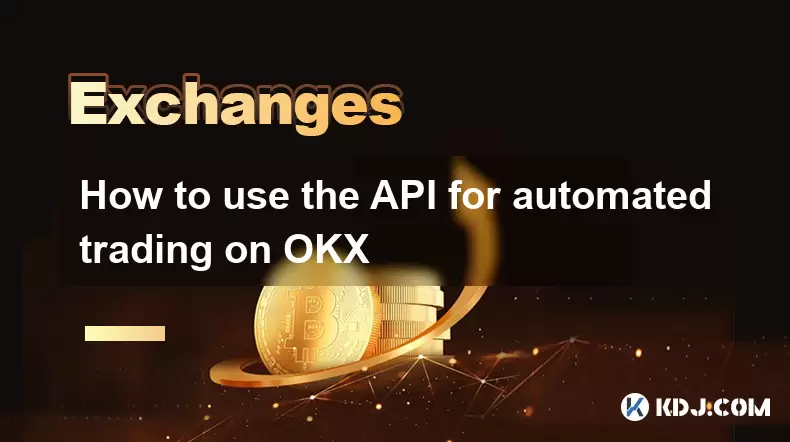
How to use the API for automated trading on OKX
Aug 07,2025 at 05:21pm
Understanding the OKX API for Automated TradingThe OKX API provides a powerful interface for users to automate their trading strategies, access real-t...

How to claim airdropped tokens on Gate.io
Aug 07,2025 at 04:01pm
Understanding Airdropped Tokens on Gate.ioAirdropped tokens are digital assets distributed for free by blockchain projects to promote awareness, incen...
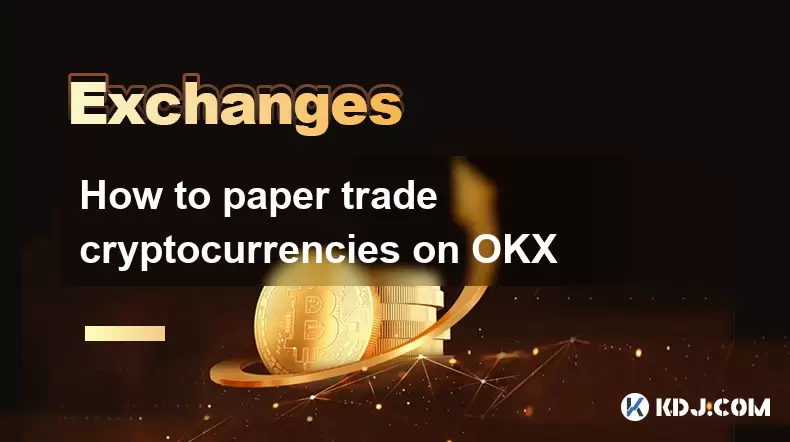
How to paper trade cryptocurrencies on OKX
Aug 07,2025 at 06:01pm
Understanding Paper Trading in the Cryptocurrency ContextPaper trading, also known as simulated or virtual trading, allows users to practice buying an...
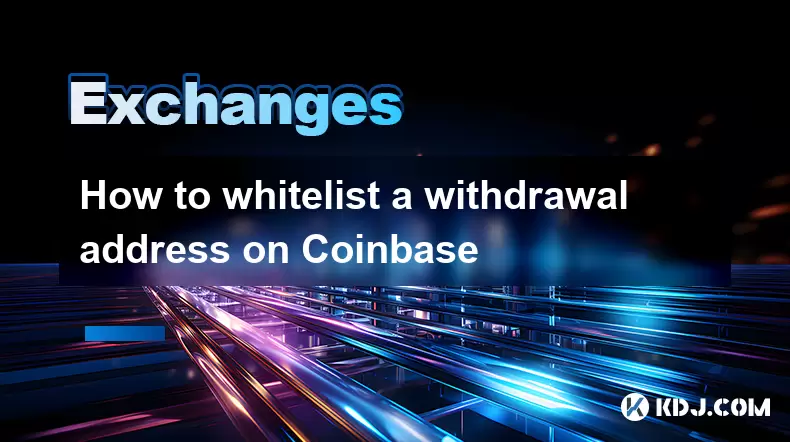
How to whitelist a withdrawal address on Coinbase
Aug 07,2025 at 07:28pm
Understanding Withdrawal Address Whitelisting on CoinbaseWhitelisting a withdrawal address on Coinbase enhances the security of your cryptocurrency ho...

How to deposit USD on Bitstamp
Aug 07,2025 at 05:18pm
Understanding Bitstamp and USD DepositsBitstamp is one of the longest-standing cryptocurrency exchanges in the industry, offering users the ability to...

How to set up custom price alerts on Bybit
Aug 07,2025 at 04:31pm
Understanding Price Alerts on BybitPrice alerts on Bybit are essential tools for traders who want to stay informed about significant price movements i...

How to use the API for automated trading on OKX
Aug 07,2025 at 05:21pm
Understanding the OKX API for Automated TradingThe OKX API provides a powerful interface for users to automate their trading strategies, access real-t...

How to claim airdropped tokens on Gate.io
Aug 07,2025 at 04:01pm
Understanding Airdropped Tokens on Gate.ioAirdropped tokens are digital assets distributed for free by blockchain projects to promote awareness, incen...

How to paper trade cryptocurrencies on OKX
Aug 07,2025 at 06:01pm
Understanding Paper Trading in the Cryptocurrency ContextPaper trading, also known as simulated or virtual trading, allows users to practice buying an...

How to whitelist a withdrawal address on Coinbase
Aug 07,2025 at 07:28pm
Understanding Withdrawal Address Whitelisting on CoinbaseWhitelisting a withdrawal address on Coinbase enhances the security of your cryptocurrency ho...
See all articles

























































































